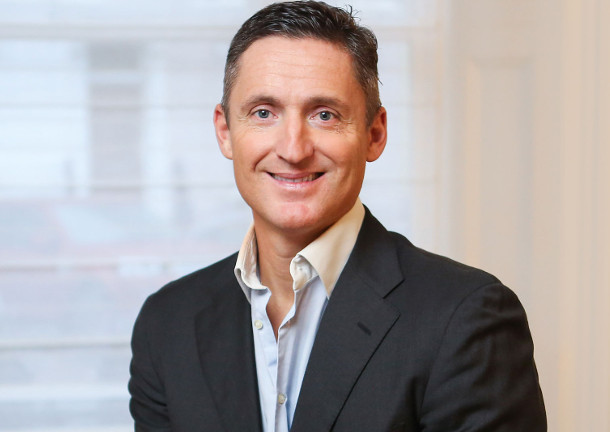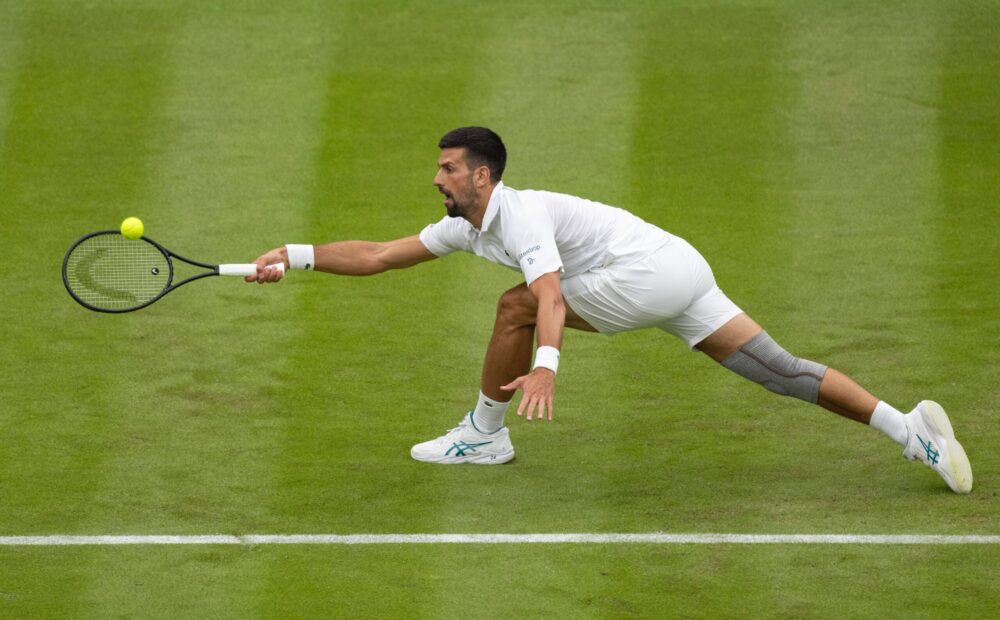Novak Djokovic has broken numerous records throughout his career but he still feels the pressure of trying to make history in the sport.
The world No.2 is through to his 10th Wimbledon final where he will play Carlos Alcaraz, who beat him at this stage of the tournament 12 months ago. There is plenty on the line for the Serbian who could equal Roger Federer’s record for most men’s titles won at SW19 and break the overall record for most major singles won in the sport if he triumphs over the Spaniard. Djokovic currently has 24 Grand Slam trophies to his name which is the same as Margaret Court, who won some of her titles before the Open Era started.
“Obviously I’m aware that Roger [Federer] holds eight Wimbledons. I hold seven. History is on the line.” Djokovic said on Friday after beating Lorenzo Musetti.
“Also, the 25th potential Grand Slam. Of course, it serves as a great motivation, but at the same time it’s also a lot of pressure and expectations.”
Coming into Wimbledon, there had been doubts over Djokovic’s form after he underwent surgery to treat a knee injury he suffered at the French Open. However, he has defied the odds to reach the final. His run has also seen him beat Alexi Popyrin and Holger Rune before getting a walkover in the quarter-finals from Alex de Minaur, who sustained an injury during the tournament. Then on Friday, he overcame a spirited Musetti in three sets.
Despite the challenge, Djokovic has insisted that his expectations to do well are always high no matter what the situation is. During what has been a roller-coaster first six months of the season, he is yet to win a title this year or beat a player currently ranked in the top 10. Although he will achieve both of these if her beats Alcaraz on Sunday.
“Every time I step out on the court now, even though I’m 37 and competing with the 21-year-olds, I still expect myself to win most of the matches, and people expect me to win, whatever, 99% of the matches that I play.” He said.
“I always have to come out on the court and perform my best in order to still be at the level with Carlos [Alcaraz] or Jannik [Sinner] or Sascha [Zverev] or any of those guys, Daniil [Medvedev].
“This year hasn’t been that successful for me. It’s probably the weakest results the first six months I’ve had in many years. That’s okay. I had to adapt and accept that and really try to find also way out from the injury that I had and kind of regroup.”
Djokovic hopes that a Wimbledon win will help turn his season around like it has done in the past for him.
“Wimbledon historically there’s been seasons where I wasn’t maybe playing at a desired level, but then I would win a Wimbledon title and then things would change.” He commented.
“For example, that was the case in 2018 when I had elbow surgery earlier in the year, dropped my rankings out of top 20, losing in fourth round of Australian Open, I think it was quarters of Roland-Garros, and just not playing the tennis that I want to play. Then I won Wimbledon and then won US Open and then later on became No.1 very soon.”
Meanwhile, 21-year-old Alcaraz is hoping to stop Djokovic in his tracks. Should he defend his title at Wimbledon, he would become the first player outside the Big Three to do so since Pete Sampras more than 20 years ago. He has won their only previous meeting on the grass but trails their head-to-head 3-2.
“I’m sure he knows what he has to do to beat me,” said Alcaraz.
“But I’m ready to take that challenge and I’m ready to do it well.”
When the two players take to the court to play in the Wimbledon final, Djokovic will be 15 years and 348 days older than Alcaraz. Making it the largest age gap in a men’s Grand Slam final since the 1974 US Open. Whoever is victorious will receive £2,700,000 in prize money.

 Hot Topics3 days ago
Hot Topics3 days ago
 Latest news3 days ago
Latest news3 days ago
 Hot Topics2 days ago
Hot Topics2 days ago
 Hot Topics3 days ago
Hot Topics3 days ago
 Focus2 days ago
Focus2 days ago
 Focus2 days ago
Focus2 days ago
 Focus2 days ago
Focus2 days ago
 Hot Topics2 days ago
Hot Topics2 days ago






























